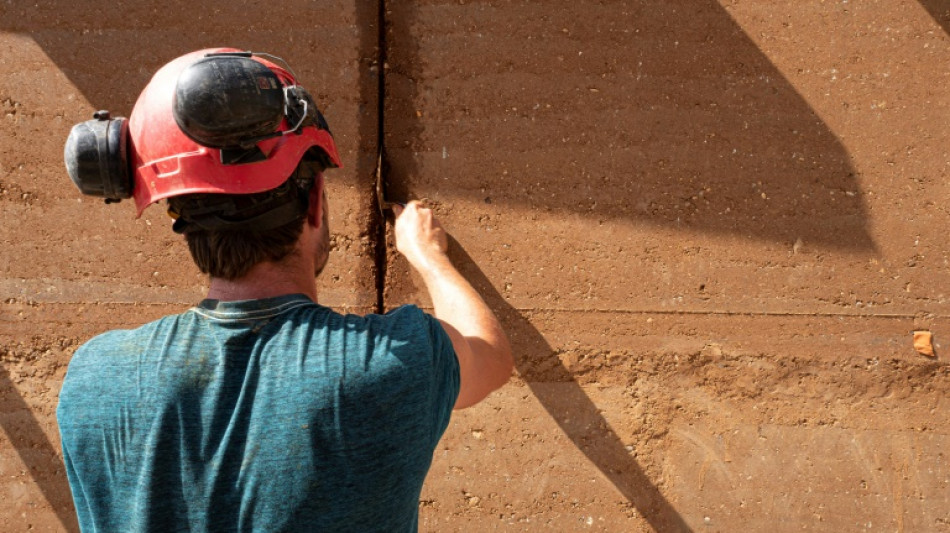
-
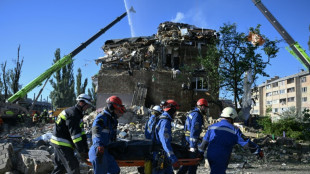 US approves $825 mn missile sale to Ukraine
US approves $825 mn missile sale to Ukraine
-
Rubio to visit Mexico, Ecuador next week to discuss migration, China: US

-
 Lyles edges Tebogo in Zurich thriller in perfect Tokyo boost
Lyles edges Tebogo in Zurich thriller in perfect Tokyo boost
-
Lyles trumps Tebogo in Zurich, Alfred shines

-
 Arsenal optimistic about Havertz return after knee surgery
Arsenal optimistic about Havertz return after knee surgery
-
Pressure-free Wong relishing US Open adventure

-
 RFK Jr bashes US health agency after its chief is sacked
RFK Jr bashes US health agency after its chief is sacked
-
Swiatek wobbles at US Open as Sinner targets third round

-
 Alfred storms to 100m victory at Diamond League finals
Alfred storms to 100m victory at Diamond League finals
-
Bison herds 'reawaken' Yellowstone's prairies

-
 RFK Jr bashes US health agency after firing its chief
RFK Jr bashes US health agency after firing its chief
-
Swiatek labours into US Open third round

-
 UN sets 2027 exit for Lebanon peacekeepers after Israeli strikes
UN sets 2027 exit for Lebanon peacekeepers after Israeli strikes
-
Brazil police target network that siphoned billions from fuel sector

-
 Liverpool and Man City face Real Madrid in Champions League, PSG get tough draw
Liverpool and Man City face Real Madrid in Champions League, PSG get tough draw
-
'Strangest' dinosaur covered in spiked armoury: scientists

-
 UN Security Council votes for Lebanon peacekeepers to leave in 2027
UN Security Council votes for Lebanon peacekeepers to leave in 2027
-
Badminton federation smoothes feathers ruffled by shuttlecock shortage

-
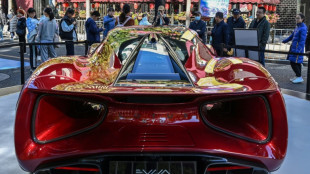 Luxury carmaker Lotus to slash UK jobs amid US tariffs
Luxury carmaker Lotus to slash UK jobs amid US tariffs
-
Small parcels in limbo as Trump moves to end US tariff exemption

-
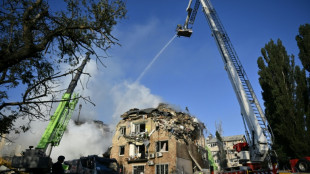 Russian attack killing 19 in Kyiv unleashes international fury
Russian attack killing 19 in Kyiv unleashes international fury
-
UN chief condemns 'endless' Gaza horrors as Israel presses offensive

-
 Vine claims solo Vuelta stage six victory, Traen takes lead
Vine claims solo Vuelta stage six victory, Traen takes lead
-
Emma Stone stars in apocalyptic satire at Venice Film Festival

-
 England skipper Aldcroft to miss rest of Women's Rugby World Cup pool phase
England skipper Aldcroft to miss rest of Women's Rugby World Cup pool phase
-
Norris sees others closing gap with dominant McLaren

-
 UK govt seeks to overturn ban on housing migrants in hotel
UK govt seeks to overturn ban on housing migrants in hotel
-
Europe powers move to Iran sanctions 'snapback' over nuclear drive

-
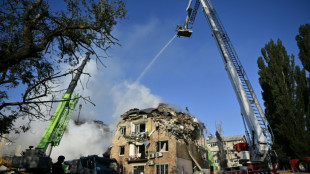 Russian attack kills 18 in Kyiv, unleashes new international fury
Russian attack kills 18 in Kyiv, unleashes new international fury
-
'Ruins': Pakistan's Punjab reels from flood surge

-
 Struggling Hamilton aims to rediscover the joy
Struggling Hamilton aims to rediscover the joy
-
Europe powers move to reimpose UN sanctions on Iran over nuclear drive

-
 US Fed Governor Lisa Cook sues Trump over move to fire her
US Fed Governor Lisa Cook sues Trump over move to fire her
-
Froome hospitalised after training crash in France

-
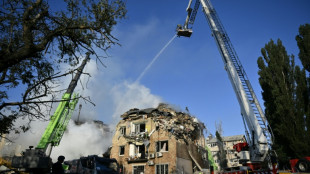 Russian attack kills 17 in Kyiv, unleashes new internatioinal fury
Russian attack kills 17 in Kyiv, unleashes new internatioinal fury
-
Prince Harry to visit UK on anniversary of queen's death

-
 'Something has to change', says Amorim after United humiliation
'Something has to change', says Amorim after United humiliation
-
Stocks mixed after Nvidia record earnings

-
 Actor Micheal Ward in UK court on rape charges
Actor Micheal Ward in UK court on rape charges
-
EU summons Russian envoy after mission damaged in Kyiv strike
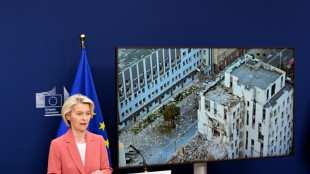
-
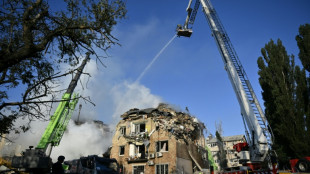 Deadly Russian attack kills 15 in Kyiv, raising fears for peace talks
Deadly Russian attack kills 15 in Kyiv, raising fears for peace talks
-
Swiss court rejects Islamic scholar Ramadan's rape conviction appeal

-
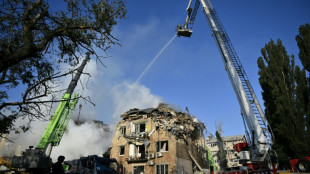 Russian attack kills 14 in Kyiv, including three children
Russian attack kills 14 in Kyiv, including three children
-
Swiss economy set to slow due to US tariffs

-
 Hong Kong media mogul Jimmy Lai verdict to come 'in good time': judge
Hong Kong media mogul Jimmy Lai verdict to come 'in good time': judge
-
Swiss court rejects Tariq Ramadan rape conviction appeal

-
 Asian markets mixed after Nvidia earnings
Asian markets mixed after Nvidia earnings
-
Rising Australian golfer makes comeback after losing sight in left eye

-
 Scandal facing sister of Argentina's president: 3 things to know
Scandal facing sister of Argentina's president: 3 things to know
-
Need a pee? Japan has QR code for that
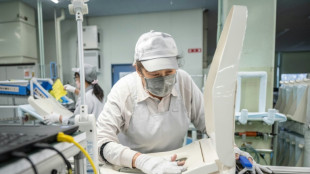

Ditching concrete for earth to build a cleaner future
It was used to build the Great Wall of China and Spain's mediaeval Alhambra Palace -- and now earth is back in vogue as a building material.
Climate change has spurred renewed interest in the ancient technique which sees polluting concrete swapped where possible for earth.
For centuries, mud and clay were an abundantly available way to put a roof over one's head, but earth's environmental credentials are behind its modern-day resurgence.
"A kilo of cement emits a kilo of CO2. Whereas a kilo of earth emits none," Xavier Chateau of the Navier Laboratory at the French National Centre for Scientific Research said.
"If we could reduce by 25 percent the volume of cement consumed globally it would be equivalent to negating the impact on the climate of all air transport," he estimated.
Known as rammed earth construction, the practice dates at least as far back as the Neolithic era.
It involves compacting certain soils into a mold, of sorts, to make building blocks or build up whole walls, layer by layer.
More than two billion people across some 150 countries live in buildings made of earth, according to a 2006 guide on earth building by French authors Hugo Houben and Hubert Guillaud.
Advocates say it can help reduce reliance on concrete, which accounts for about eight percent of global CO2 emissions.
Earth also has a high thermal capacity by self-regulating its humidity, is fireproof, non-toxic and can be completely recycled.
But it has downsides too, not least the cost, given the need to find builders qualified in ancient techniques.
- 'Earth concrete' hybrid -
Confronted with flooding, earth-constructed buildings need protection, as earth also has its weaknesses.
A four-storey rammed earth building crumpled in France's southeastern Rhone region in November, while a house collapsed in the nearby department of Isere on December 22, according to local press reports.
Often substances such as lime or straw can be added to the earth to stabilise it and bolster its durability.
French building material firm Saint-Gobain is experimenting with a hybrid system of "earth concrete", combining excavated earth from construction sites, steel industry waste and hemp.
But purists see it as verging on heresy, in a country due to complete a 9,000-seat concert coliseum north of Paris next year using recycled excavated earth.
"It's not the same material at all," complains architect Paul-Emmanuel Loiret, who manages La Fabrique outside Paris where blocks and bricks of compressed earth are made from construction rubble.
Urging a "complete and rapid decarbonisation" of construction, he complained that EU laws "impose on us materials 10 to 20 times more durable than those which we need."
But, said Chateau: "In Africa, in Burkina Faso or Malawi, it's become a kind of artisanal savoir-faire to stabilise raw earth with cement at the foot of the building to solve the problem of water" encroachment.
- 'Huge demand' -
Austria has Europe's only factory to date making low-energy prefab homes using rammed earth methods.
The site, in the western village of Schlins on the Liechtenstein border, creates foundations, floors and walls using chalk, clay, chopped straw, lime or gravel.
A machine pounds the earth which is compacted into a vast casing to produce 40-metre (130-foot) long walls.
Once dried and cut to size, the blocks are sent off to be assembled.
"Given the ecological challenge and the problem of energy, huge demand is emerging for this material," said environmentalist, entrepreneur and former potter Martin Rauch, who built the factory.
Architect Sami Akkach who works with Rauch said they use earth from the surrounding area, building and excavation sites.
"It must contain clay, gravel, angular rather than round so it really sticks," Akkach said.
Rauch has several earth-constructed buildings to his name, including his home whose exterior walls include terracotta designed to act as a brake on rain and erosion, a throwback to ancient methods used in Saudi Arabia.
He says the factory boasts Europe's longest earthen wall -- at 67 metres -- and he believes the demand is there for more projects using rammed earth.
"The problem is there are not enough artisans and people are still too afraid of this natural material," he said.
He added that hopefully people will realise that "earth structures will last for centuries, if they are built correctly."
C.Meier--BTB



